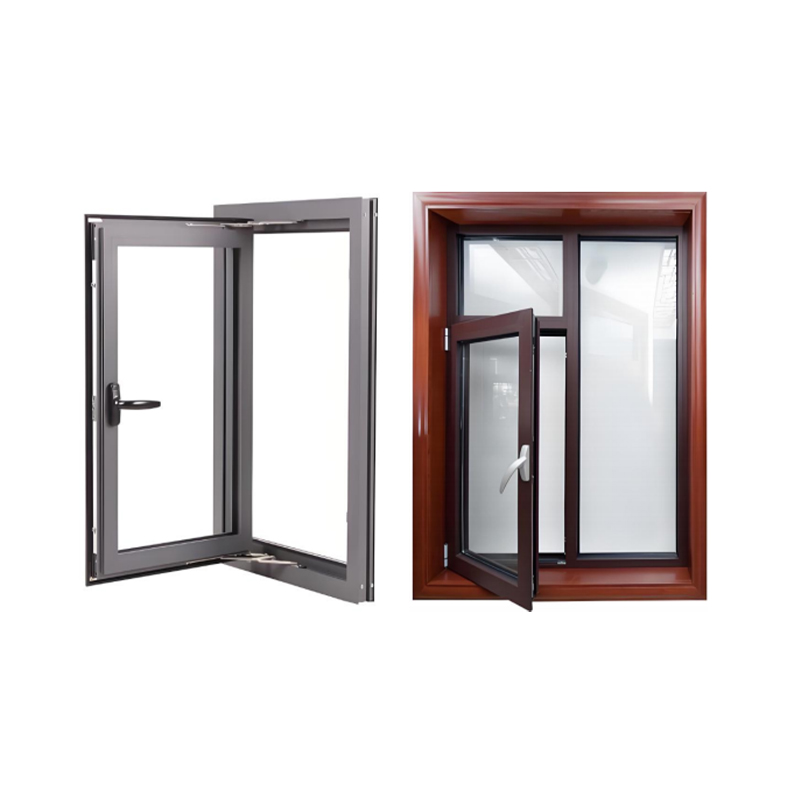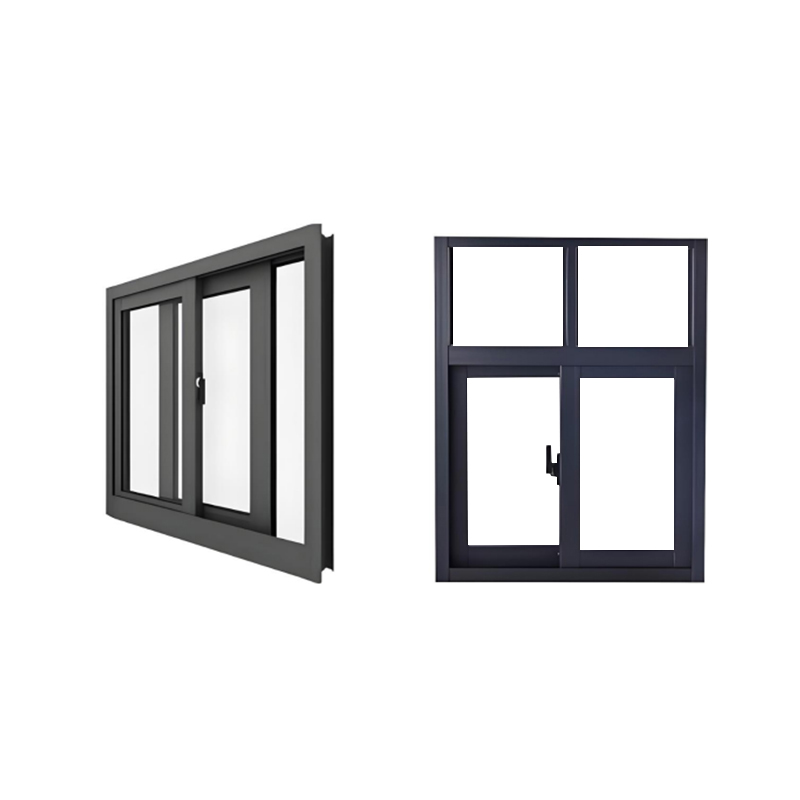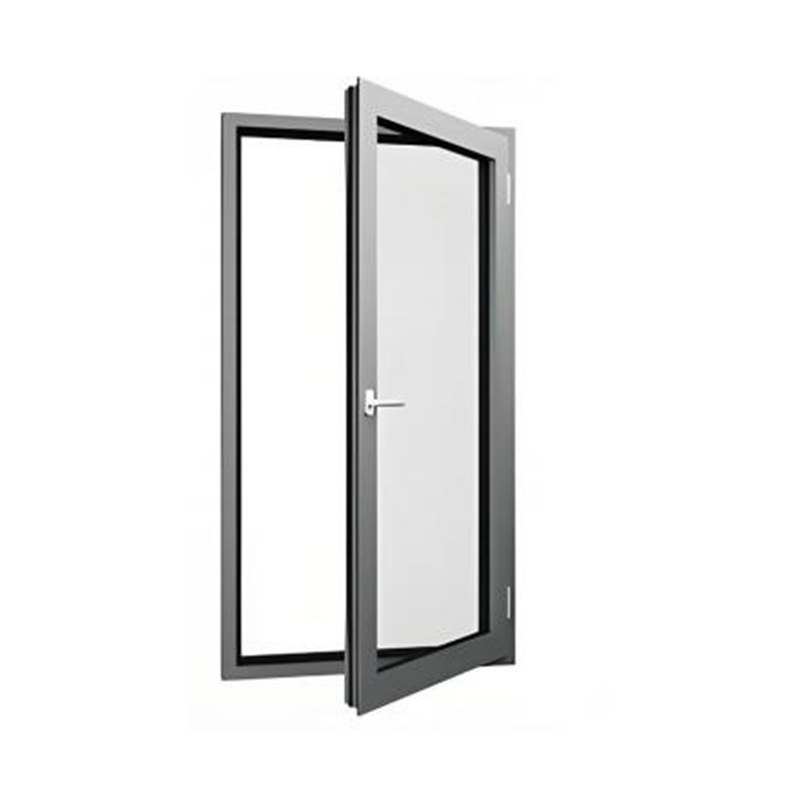How can level-out windows more effectively promote indoor and outdoor air circulation and achieve efficient ventilation?
Release Time : 2025-04-05
In architectural design, windows are the key channels for indoor and outdoor air exchange, and their opening methods play a decisive role in ventilation effect. Level-out windows, including casement windows, sliding windows and other window types that open horizontally, have shown significant advantages in promoting indoor and outdoor air circulation and achieving efficient ventilation with their unique design.
Large opening area, smoother air circulation
One of the outstanding advantages of level-out windows is that they can provide a large opening area. Taking the common casement window as an example, when the window is fully opened, almost the entire window sash can be connected to the outdoor space, forming a ventilation effect similar to "open type". This large-area opening method greatly increases the air circulation channel, allowing outdoor fresh air to quickly and massively flow into the room, while indoor dirty air can also be quickly discharged. In contrast, some windows with limited opening methods, such as fixed windows or windows with a small opening area, will have a greatly reduced air circulation efficiency.
Form convection and accelerate air circulation
The reasonable layout of level-out windows can also cleverly form air convection. In architectural design, if level-out windows are installed on two opposite walls or at different heights on the same wall, when the window is opened, outdoor air will enter the room from one window, form airflow in the room, and then be discharged from the other window. This convection effect can accelerate the circulation of indoor air, so that the air in every corner can be renewed. For example, in the hot summer, by forming good air convection, the indoor temperature can be quickly reduced, bringing a cool and comfortable feeling.
Flexible adjustment to meet different ventilation needs
Level-out windows usually have flexible adjustment functions. Casement windows can adjust the opening angle as needed, from slightly open to fully open, to meet the ventilation needs of different seasons and weather conditions. In breezy weather, the window can be opened slightly to ensure air circulation and prevent strong wind from blowing directly into the room; when the air quality is good and rapid ventilation is required, the window can be fully opened. Sliding windows can also control the opening area by sliding the window sash, which is simple and convenient to operate, and users can adjust the ventilation intensity at any time according to actual conditions.
Combined with design, optimized ventilation path
In modern architectural design, level-out windows are often combined with the overall building layout and interior space planning to further optimize the ventilation path. For example, in some large public buildings, by cleverly setting the position and opening direction of level-out windows, the air can be guided to flow along a specific path, making the ventilation effect more uniform and efficient. In residential design, the ventilation needs of different functional areas such as bedrooms and living rooms are also taken into consideration, and level-out windows are reasonably arranged so that each room can enjoy good ventilation conditions.
Reduce noise interference and improve ventilation comfort
Compared with some windows that have poor ventilation effects but may generate loud noise, level-out windows can effectively reduce noise interference while achieving efficient ventilation. Due to its reasonable opening method, the air flow is smoother and the noise caused by air turbulence is reduced. In addition, some high-quality level-out windows also use sound insulation and noise reduction technology to further improve the comfort during ventilation.
Level-out windows play an important role in promoting indoor and outdoor air circulation and achieving efficient ventilation and air exchange with their advantages such as large opening area, convection, flexible adjustment, combined design to optimize ventilation paths and reduce noise interference. In architectural design and home decoration, the rational selection and use of level-out windows can create a healthier and more comfortable indoor environment for us.
Large opening area, smoother air circulation
One of the outstanding advantages of level-out windows is that they can provide a large opening area. Taking the common casement window as an example, when the window is fully opened, almost the entire window sash can be connected to the outdoor space, forming a ventilation effect similar to "open type". This large-area opening method greatly increases the air circulation channel, allowing outdoor fresh air to quickly and massively flow into the room, while indoor dirty air can also be quickly discharged. In contrast, some windows with limited opening methods, such as fixed windows or windows with a small opening area, will have a greatly reduced air circulation efficiency.
Form convection and accelerate air circulation
The reasonable layout of level-out windows can also cleverly form air convection. In architectural design, if level-out windows are installed on two opposite walls or at different heights on the same wall, when the window is opened, outdoor air will enter the room from one window, form airflow in the room, and then be discharged from the other window. This convection effect can accelerate the circulation of indoor air, so that the air in every corner can be renewed. For example, in the hot summer, by forming good air convection, the indoor temperature can be quickly reduced, bringing a cool and comfortable feeling.
Flexible adjustment to meet different ventilation needs
Level-out windows usually have flexible adjustment functions. Casement windows can adjust the opening angle as needed, from slightly open to fully open, to meet the ventilation needs of different seasons and weather conditions. In breezy weather, the window can be opened slightly to ensure air circulation and prevent strong wind from blowing directly into the room; when the air quality is good and rapid ventilation is required, the window can be fully opened. Sliding windows can also control the opening area by sliding the window sash, which is simple and convenient to operate, and users can adjust the ventilation intensity at any time according to actual conditions.
Combined with design, optimized ventilation path
In modern architectural design, level-out windows are often combined with the overall building layout and interior space planning to further optimize the ventilation path. For example, in some large public buildings, by cleverly setting the position and opening direction of level-out windows, the air can be guided to flow along a specific path, making the ventilation effect more uniform and efficient. In residential design, the ventilation needs of different functional areas such as bedrooms and living rooms are also taken into consideration, and level-out windows are reasonably arranged so that each room can enjoy good ventilation conditions.
Reduce noise interference and improve ventilation comfort
Compared with some windows that have poor ventilation effects but may generate loud noise, level-out windows can effectively reduce noise interference while achieving efficient ventilation. Due to its reasonable opening method, the air flow is smoother and the noise caused by air turbulence is reduced. In addition, some high-quality level-out windows also use sound insulation and noise reduction technology to further improve the comfort during ventilation.
Level-out windows play an important role in promoting indoor and outdoor air circulation and achieving efficient ventilation and air exchange with their advantages such as large opening area, convection, flexible adjustment, combined design to optimize ventilation paths and reduce noise interference. In architectural design and home decoration, the rational selection and use of level-out windows can create a healthier and more comfortable indoor environment for us.







